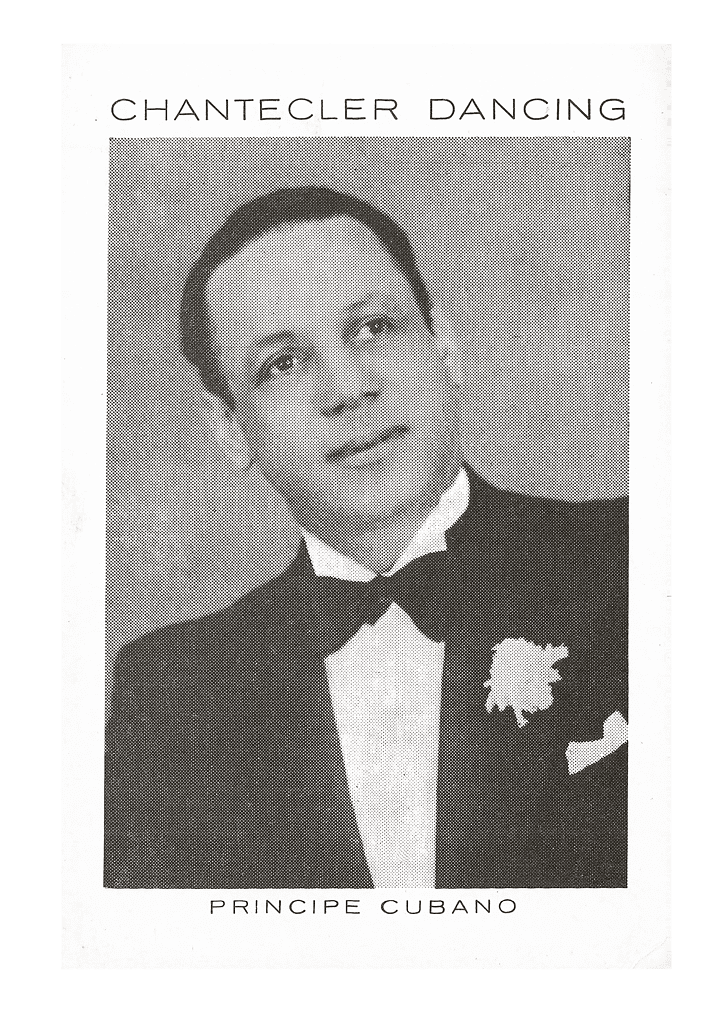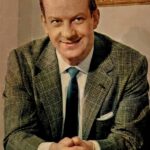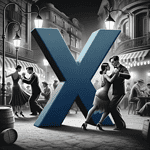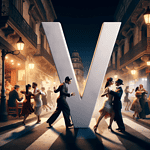A recurring motif in many Tango songs is the cabaret. The cabarets were nightclubs that had live orchestras playing tango every night. One of the most famous ones, The Chantecler Cabaret, was run by Ángel Sánchez Carreño, also known as Príncipe Cubano, and is made famous through many Tangos that are still played in Milongas today all over the world.
Table of Contents
The mythical Chantecler Cabaret
The Chantecler, located at Paraná 440 in Buenos Aires, was a famous cabaret that operated from 1924 to 1960. The name “Chantecler” is derived from French, referencing sophistication but also alluring to the infamous French nightlife, and it translates into “canta claro” or “sing clearly.”

The cabaret was known for its sophisticated decor, live music, and performances by famous tango singers and dancers. It featured three dance floors and a large stage. The venue hosted typical and jazz orchestras, and at its inauguration, Julio de Caro’s orchestra performed. Other renowned orchestras that performed at the Chantecler included those led by Juan D’Arienzo, Eduardo Del Piano, Carlos Di Sarli, Joaquín Do Reyes, Atilio Stampone, Leopoldo Federico, and Héctor Varela.
While a lot of the tango culture evolved in the poorer suburbs of Buenos Aires and Montevideo, the more exclusive cabarets in the city center also played an important role.
They were a popular destination for locals, visitors from abroad, artists, politicians, and the wealthy, who gathered to drink, dine, dance, and enjoy tango-related shows.
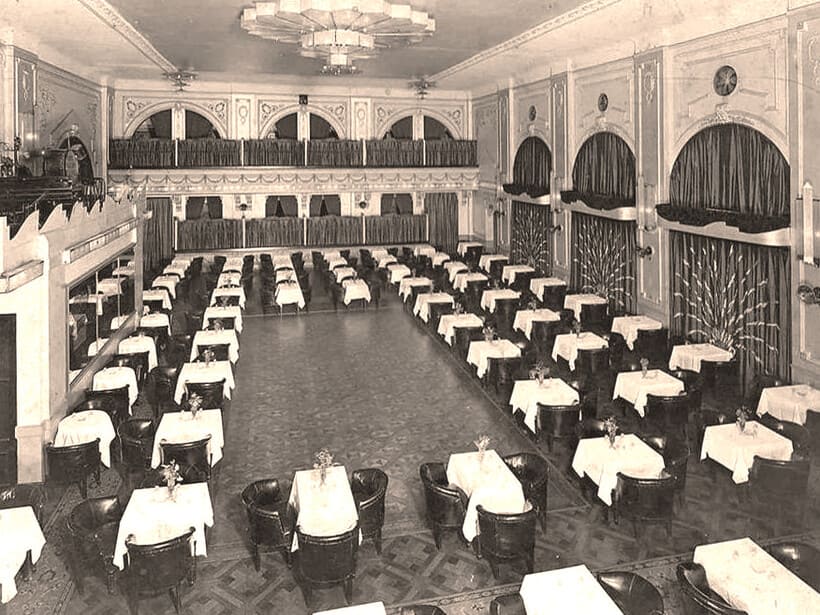
In the 1945 film “El cantor del pueblo” the Orquesta Tipica Juan D’Arienzo was filmed in the Chantecler, the cabaret where D´Arienzo had been playing since 1937. D´rarienzo and his orchestra are introduced by the presenter Angel Santos Carreño, the “Principe Cubano”
The cabaret was closed and demolished in 1960. In homage to the Chantecler, the tango “Glorioso Chantecler” was composed, and after its closure, Enrique Cadícamo wrote the tango “Adiós Chantecler”, and in 2015, a musical show titled “Chantecler Tango” was inspired by its history, directed and performed by the choreographer and dancer Mora Godoy.
The man behind the cabaret
The Chantecler was owned by French citizen Charles Seguin, but Ángel Sánchez Carreño, “El Principe Cubano ” was the famous representative of the place. Born on May 31, 1905 in Cuba (thus the nick name), and departing on February 11, 1971. He managed the public relations, and staff management, which would have been quite a complex task, given the size of the establishment.
A perfect “Cabaretier”, Sánchez Carreño assumed the role of head of the general manager, overseeing staff, and orchestrating shows at the legendary Chantecler.
He acted as a presenter, occasionally singing, and he ensured impeccable uniforms and appearances for waitstaff and entertainers alike. His influence extended even to the details of nails, hair, and attire for the female performers, creating an atmosphere of perfection within the venue.
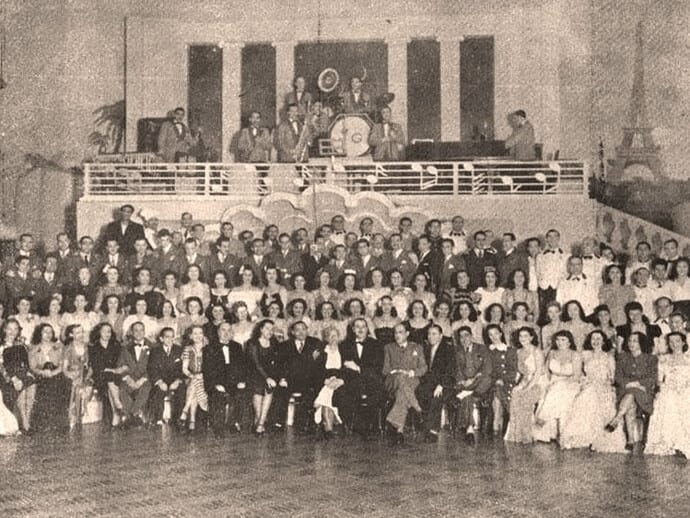
Carreño did not only manage the iconic cabaret, but his artistic journey encompassed roles as a cantor, lyricist, and composer. His creative legacy includes several tangos, notable compositions including “Metido” (later changed to “Enamorado”), “Seamos amigos” (musicalized by Domingo Rullo), and “El Rey del Compás,” immortalized by D’Arienzo on September 12, 1941.
10 Most Important Tango Songs of Príncipe Cubano
Ángel Sánchez Carreño, known as Príncipe Cubano, left a lasting impact on the tango scene with his compositions. Here are the top 10 tango songs associated with him, showcasing his lyrical and musical prowess:
- “Metido” (1942)
- Orchestra: (Initial recording by Osvaldo Fresedo with vocals by Roberto Ray)
- Description: Despite facing censorship challenges during the dictatorship, “Metido” (later changed to “Enamorado”) stands as a symbol of resilience and artistic expression.
- “El Rey del Compás” (1942)
- Orchestra: Juan D’Arienzo
- Description: Recorded by D’Arienzo on September 12, 1941, this tango solidified both Sánchez Carreño and D’Arienzo’s places in tango history, with its rhythmic brilliance.
- “Seamos amigos” (1944)
- Orchestra: Domingo Rullo
- Description: Musicalized by Domingo Rullo, “Seamos amigos” reflects the camaraderie and social connections inherent in tango culture.
- “A rumbear” (1936)
- Orchestra: (Initial recording details not specified)
- Description: A vibrant tango collaboration with Antonio Benedicto, capturing the spirit of rumba and dance.
- “El guajiro” (1942)
- Orchestra: (Specific orchestra details not specified)
- Description: This tango, co-created with Luis Stalman, showcases Sánchez Carreño’s versatility in capturing diverse musical influences.
- “Por un beso de tu boca” (1943)
- Orchestra: (Initial recording by Eduardo Benigno Portas with vocals by Carlos Dante)
- Description: A passionate tango that highlights the theme of yearning and desire, resonating with tango’s emotional depth.
- “Morenaza”
- Orchestra: (Specific orchestra details not specified)
- Description: A classic tango that celebrates the allure and beauty of a mysterious woman.
- “No te metás” (1939)
- Orchestra: (Initial recording details not specified)
- Description: An expressive tango that carries a timeless message of caution and advice in matters of the heart.
- “S de rumbas n° 1”
- Orchestra: (Specific orchestra details not specified)
- Description: Infused with the spirit of rumba, this composition showcases Sánchez Carreño’s ability to blend diverse musical elements into tango.
- “Sabrosona” (1935)
- Orchestra: (Initial recording details not specified)
- Description: A lively and flavorful tango that reflects the joyful and playful aspects of tango dancing.
Sources
- Clarín – El templo de la vieja noche porteña
- Hugo Gregorutti – “Príncipe Cubano”
- Jorge Palacio (Faruk) – Los cabarets de los años cuarenta
- Chantecler Tango – Glorioso Chantecler en la voz de Osvaldo Ramos con la orquesta de Juan D’Arienzo
- http://teatrosdebuenosairesdelsigloxviialxxi.blogspot.com/2020/01/1924-chantecler.html?m=1
Frequently Asked Questions about Príncipe Cubano
How did Príncipe Cubano get his nickname?
Giovanna Ritana (Jeannette), wife of Amadeo Garesio, gave him the nickname “Príncipe Cubano.” It is said that he, in turn, bestowed the title “Rey del Compás” (King of the Beat) upon Juan D’Arienzo.
How did Príncipe Cubano contribute to tango during censorship?
During the dictatorship of 1943, the censorship affected some of Príncipe Cubano’s compositions, like “Metido,” which had to be changed to “Enamorado.” This reflects his commitment to artistic expression despite challenging circumstances.
What is the significance of “El Rey del Compás” in tango history?
“El Rey del Compás” recorded by Juan D’Arienzo in 1941 is a significant tango, solidifying both Sánchez Carreño and D’Arienzo’s places in tango history. The rhythmic brilliance of this piece is celebrated by tango enthusiasts.
What impact did Príncipe Cubano have on the Chantecler cabaret?
Príncipe Cubano’s meticulous management of Chantecler’s affairs contributed to the cabaret’s reputation. His attention to detail in the appearance and conduct of staff added to the allure of the venue.
